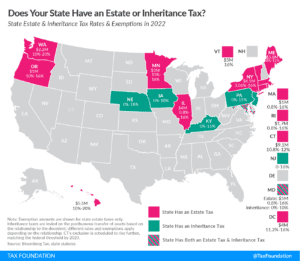Being laid off in the tech industry is not uncommon right now. Every industry goes through ups and downs, and unfortunately that may mean a company shifts focus or needs to downsize. We’ve seen this from Meta, Google, LinkedIn, Twilio, and much smaller companies in the last year. The important thing to remember is that it isn’t because of you. This is not a reflection on who you are as a worker and a person.
Losing a job can feel like you are losing a part of yourself when you’ve put 8+ hours a day into the role for a long period of time. You will go through an emotional process in this and you need time for yourself.
Below are our 8 best tips on preparing for this pause in your professional journey.
1. Take time to process your layoff
Understand the 7 stages of grief and how it can show up when you’ve been laid off.
Breathe and decompress. If you’ve been working long hours, try to get outside and move your body.
Spend time with friends and family to reconnect to yourself. Often, we spend so much time sitting and staring at a screen, we aren’t nourishing ourselves. Reconnect with friends and family. Don’t let your fear or shame keep you inside and from talking to others. This is your time to step away and hit ‘refresh’.
Take long walks and meander while you think about next steps. Research shows our brains are better at processing information while walking.
Don’t make any rash decisions while you process your emotions around this shocking event.
Consider speaking with a counselor to help you through this time. We all need a thinking partner from time to time 🙂
When you feel ready to take on the financial steps, we recommend reviewing the points below.
2. Adjust your budget and review your cash reserve
Once you are in a place where you can focus on money, take stock of your debt and cash balance. This is not the time to default on loans or miss credit card and loan payments. Make sure you have a plan for continuing your obligations and know where you can seek deferment. Federal student loans may allow unemployment deferment.
Review your spending habits and understand what you can delay vs what you need to make life work month to month. If you’ve never budgeted before, now is a great time to start and make it a habit!
If you are starting from scratch, our template HERE can help you gather your expenses for the year. Then, determine which are necessary day-to-day expenses, nice-to-haves, and future payments to be ready for. This will also help you during interview season to know what your base need is.
With the number of layoffs in the market at this point, we are seeing much lower salaries presented to job candidates. Be prepared.
3. Consider your post-layoff adventure
Our clients maintain an emergency fund for times like this. We often encourage clients to use their time between jobs to do something they don’t normally have time for. Travel to South America (where living may be cheaper) for an inexpensive trip or lean into working with your hands. If you’ve always wanted to dabble with ideas or other educational endeavors, this may be the time to do it.
4. Wrap up your ‘work’ when laid off
We recommend taking these steps when laid off with your employer:
- Review documentation sent to you for signature. Your severance package will list final payments, confidentiality terms, etc. Review this in detail and make sure you understand what you are signing. Highlight important dates/cut-offs so you aren’t taken by surprise. Consider having an employment attorney review this and your employment contract to see what negotiations can be made
- Find out how you will access your final paycheck, download it, and make sure your information is up to date for getting your W-2 after year end
- Review your stock plan agreement to understand what your timelines are for exercising any vested options. You may only have 60 to 90 days to exercise them (at a public company) or a separate window of time post-IPO (if they hope to go public eventually)
- Make sure you can access your 401(k), HSA, and other benefit websites without your work email address
- Write down the good things: a list of accomplishments or portfolio projects will help with case study interviews. It can help you remember what this role gave you during your time at the company, too
- Contact colleagues for potential references or letters of recommendation. You will need this for your next round of interviews
In a layoff, several employees are dismissed at once due to a shift in company priorities or a downsizing across the board. This is different from a ‘termination’. A termination (for cause) is due to an employee’s direct actions. Make sure you are reading the correct subclauses when going through your contract. Other thoughts are nicely laid out by BetterUp.
5. Review your severance package
A typical severance package in tech will depend on a few things: Company size, employment length, etc. We often see 6 weeks to 3 months of severance provided with an additional week per year of employment with the company. However, this may not always be the case. For companies that shut down quickly (like Convoy) there may not be severance provided.
Beyond money benefits, your company may also offer professional help. Look at what is offered for career, financial, and emotional counseling. Every little bit helps.
There may be fine print around paying severance back if you find a new job. Make sure you know your rights in the severance package. This is another area that an employment attorney could help review for any inconsistencies or ‘gotchas’.
6. Consider your health insurance options
Depending on what state you are in, you may find the health exchange or COBRA a better fit for your needs. The trade-offs between these two will be payments vs health coverage.
COBRA is offered through your employer as a continuation of your employee health insurance. The downside is your employer will no longer be contributing to the health premium of that insurance and you will need to bear the full cost.
If the cost of COBRA feels out of reach, a state health exchange may allow you to take on a lower payment for basic coverage. These individual plans may also come with a subsidy if your income is dramatically lower.
Are you married, or have a domestic partner? You may be able to get added to your partner’s health insurance. A lay-off is a change in life that will allow you to update your health insurance coverage outside of an employee benefits enrollment window.
Be wary of moving forward with no insurance. Some states, like California, implemented penalties for non-compliance with maintaining health insurance. The California Individual Shared Responsibility penalty can be steep. You can estimate your penalty HERE. Beyond penalties, this could also leave you open to insurmountable medical costs if an emergency medical event occurs.
7. File for Unemployment
Each state is a bit different here, but generally there is a filing process online at a governmental website. The Department of Labor keeps a comprehensive list of state unemployment office websites.
Generally, there is preparation required to file. You will need identifying information for the tech company you worked with, the last date you worked and the reason you are no longer working there. Then, they will request information for all employers you had over 18 months+ and documents to verify your identity.
8. Start the process of looking for a new job
Each person’s journey is different, but I do like the idea of finding job descriptions that feel like a ‘hell yes!’ to apply to. Use that to drive where your next role may take you. Review job descriptions for a role across many employers to see what keywords you may want to use on a resume. I am not a ‘resume guru’, but there are some wonderful ones out there!
While you are looking for a job, consider freelance and contract work while you search (if this doesn’t put your severance at risk). In our current market, I am hearing it takes longer and longer for laid off tech workers to find the right next fit. Allow this kind of hourly work to help take the pressure off of your day-to-day finances.
Get back to your network. Lean into catching up with past colleagues or others you respect in the industry. Ask for feedback on how you can be competitive in the industry and evaluate if you need any ‘upskilling’. After being buried in work, you may find the job market post lay-off is on a different path than you remember.
In the end, no individual’s journey is the same and you may decide to get out of tech completely. Our goal is to know you can move forward with your most fulfilled life while streamlining finances behind the scenes. I hope this tip list helps prepare you better in this time of need!
If you are laid off and need a financial thinking partner, schedule an introductory meeting for us to give you feedback on your next steps.
The above discussion is for informational purposes only. Recommendations are of a general nature, not based on knowledge of any individual’s specific needs or circumstances, and there is no intent to provide individual investment advisory, supervisory or management services.









